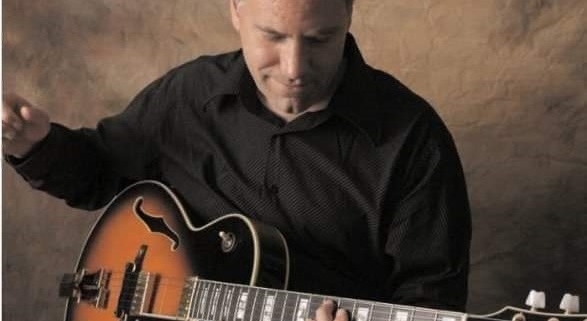Jazz: America’s Original Diversity Success Story
By Jeff Perry
Long before the Civil Rights Act, long before Brown vs. The Board of Education, and long before President Truman’s integration of the armed forces, black and white jazz musicians where breaking social taboos in order to share and learn from each other. In the 1920s white musicians in Chicago would head down to the south side after their gigs for after-hours jam sessions with black musicians. In the 1930s Benny Goodman, perhaps the most popular band leader of the time, added black musicians to his all-white big band – a revolutionary step for diversity in the workplace. In the 1950’s Stan Getz collaborated with Brazilian musicians to create a new musical style – Bossa Nova. Then as now, Jazz possesses a culture that thrives, indeed benefits, from diversity. Jazz, it would seem, is America’s original diversity success story.
For almost 100 years, jazz has led white to black, black to white, Western to Eastern, American to European, Northern to Southern, visceral to cerebral, conventional to unorthodox. In Jazz, working with and learning from people from other cultures is a core value. What led these musicians to embrace diversity decades before it became the concept that we know today? How has that embrace led to jazz’s evolution, strength, and constant change and innovation? And, what can the rest of us learn from the Jazz example?
How A New Music Was Born
di·verse
2: composed of distinct or unlike elements or qualities
Completely new forms of music are rare throughout history. So how did this new form, this uniquely American form, of music come into being? We can look to America’s “melting pot” tradition for the answer. Put simply, jazz was created through the coming together of European and African musical tradition. European music featured advanced harmonic and melodic elements while African music was very advanced rhythmically and had other unique properties that European tradition did not. By combining elements of these two unlike traditions a new music was born.
Through this fusion jazz acquired one of its significant traits – acculturation. That is, adopting and absorbing characteristics from the music of other cultures. Because of this trait, rather than remain stagnant, jazz has been extremely innovative and has created many distinct sub genres since the original Dixieland music that came out of New Orleans in the early 1900s. In its growth it has looked to all kinds of European music, as well as Cuban and Brazilian music, marching band music, Blues, Broadway, gospel, Country, Indian, Jewish Klezmer, and Arabic music. In a brilliant display of “reverse acculturation,” in the late 1960s and 70s jazz borrowed from the offspring it gave birth to – Rock and Roll – and created jazz-rock fusion.
This trait – this culture – of borrowing from virtually any and every other kind of music, has led individual jazz musicians to not only accept diversity, not only embrace it, but to proactively seek it out. Just like those white musicians in Chicago sought out their south side counter parts, just as black jazz musicians in 1940s and 50s looked to Stravinsky, Dvorak, and Debussy, this trend continues. In the 80s Paul Winter collaborated with Russian folk singers and even played with the calls of wolves and whales. The last record Miles Davis made (in the early 1990s) mixed jazz with hip-hop music. More recently, guitarist John McLaughlin recorded an album (Floating Point) with Indian musicians half his age well-versed in both Indian and Western music leading to sounds not heard with earlier jazz-Indian fusions.
Why Seek Diversity?
The motivation for jazz musicians to seek out diversity is simple – because it makes them better players. It enhances their ability to express and differentiate themselves, and find a unique voice. This last point – achieving a recognizable, unique voice – is perhaps the vanguard of jazz accomplishment. And it is no easy task. A common process for a player to develop a distinct sound is to blend many influences and techniques, finding a personal combination of them that no one else has. Clearly it is in a musician’s self-interest to seek out diversity.
To understand the need to diversify, consider the demands on jazz musicians: they are not only expected to try to find their own unique style – to sound unlike everyone else – they are challenged to continually find new depths, avoid repetition, and frequently reinvent themselves. The nature of jazz improvisation is not to play a scripted part, not even to play a predictable part, but to break new ground – to surprise the audience and the even the player. Given that there are only twelve notes in the Western scale, this may sound like an insurmountable task.
From my experience it is extremely difficult to reach these demanding new depths. To succeed, musicians have to combine emotion, knowledge, technique, experience, spirit, focus, and risk taking. They have to have a “well” within. To draw from this well, there has to be a lot of water to tap. The more variety of techniques you have available, which come from diverse influences, the more you can vary your expression and continue to “get different.”
How to Proactively Seek Diversity
As established, jazz musicians are part of a culture that proactively seeks diversity. They seek influence from other cultures by listening to records, learning songs, reading interviews of musicians from other cultures, and by seeking to hear, meet, and learn first-hand from a broad range of fellow musicians.
Minneapolis-based Saxophonist Doug Little gives us two great examples of proactively seeking diversity. He has spent time in Cuba studying Cuban music and seeking new ideas from it. So, what is he finding?
“While the greatest challenges in jazz involve melody and harmony,” Little says, “Cuban and Latin music challenge you rhythmically. The rhythm provides the interest and excitement. As you might imagine, I’m focusing a lot more on rhythmic development now than I was before.”
However, Little didn’t need to travel outside our borders to find cross-cultural pollination. He recalls time he spent playing with African-American blues singer Big Walter Smith, “I learned that the blues has its own set of values that are different from jazz. Blues is all about the feel and the sound. Playing a lot of notes, like you might in jazz, is rarely appropriate. I remember Big Walter would say ‘don’t play so many notes, just play me the melody.’” Thus, Little’s musicianship, his approach, his sound, has been shaped by the influence of both Cuba and Big Walter’s blues ethos.
For jazz musicians, European Classical music has always been a hugely important source for harmonic and melodic ideas as well as for instrumentation. Classical technique has also been influential as virtuosity is often associated with the great jazz improvisers. Some of the important early innovators of jazz were classically trained in Europe and brought their ideas back with them. Jazz musicians continued to look across the Atlantic as the new music developed and today classical music still provides a vast source for ideas.
Pianist Mary Louise Knutson studied classical music before becoming an accomplished jazz improviser. The European approach has affected her in two ways. “First, my Classical training influences how I hear music. I listen with a large scope – focusing on dynamics, articulation, orchestration, and interaction.”
“In addition, people often comment on my touch. Classical taught me to use a wide range of articulation that adds diversity to my playing. I use a range of attack, dynamics, and speed which are techniques, values, I learned from the European tradition.”
Diversity in Action
Jazz musicians approach learning with “open ears.” They study, emulate, and incorporate techniques and sensibilities from other cultures, mix that with their own strong individuality, strengths, and primary culture. Without this approach the music of jazz would have stagnated a century ago. Because of it, the music has been blessed with a thriving, passionate, evolving music. In jazz you can find influence from cultures all over the world, yet it remains uniquely American.
While the issue of diversity is given much attention now in corporate America, much opportunity remains. In many professional and business magazines there is talk of what diversity means, what its implications are, how to implement diversity programs. Proving the business case for diversity is another key topic.
Jazz has been successfully practicing diversity for nearly a hundred years. It is clear how it has impacted and benefited the development of the music, provided the music with innovative vigor, and benefited countless individual jazz musicians (not to mention the listeners!). Perhaps it’s time for the business world to ask – what is there in the jazz diversity model that we can learn from?
Copyright © 2020, Jeff Perry, Jazz Innovation Inc. Jeff Perry is a Minneapolis-based jazz musician. He has studied at Berklee College of Music in Boston, MA and has a Bachelor’s degree in Jazz Studies from the American Conservatory in Chicago, IL. He is also an Advertising Executive for the Star Tribune Media Company. Visit his website at jeffperryguitar.com
To stay up to date on all the latest from Lila Kelly Associates, LLC and DiversityIntegration.com, subscribe to our monthly newsletter.

